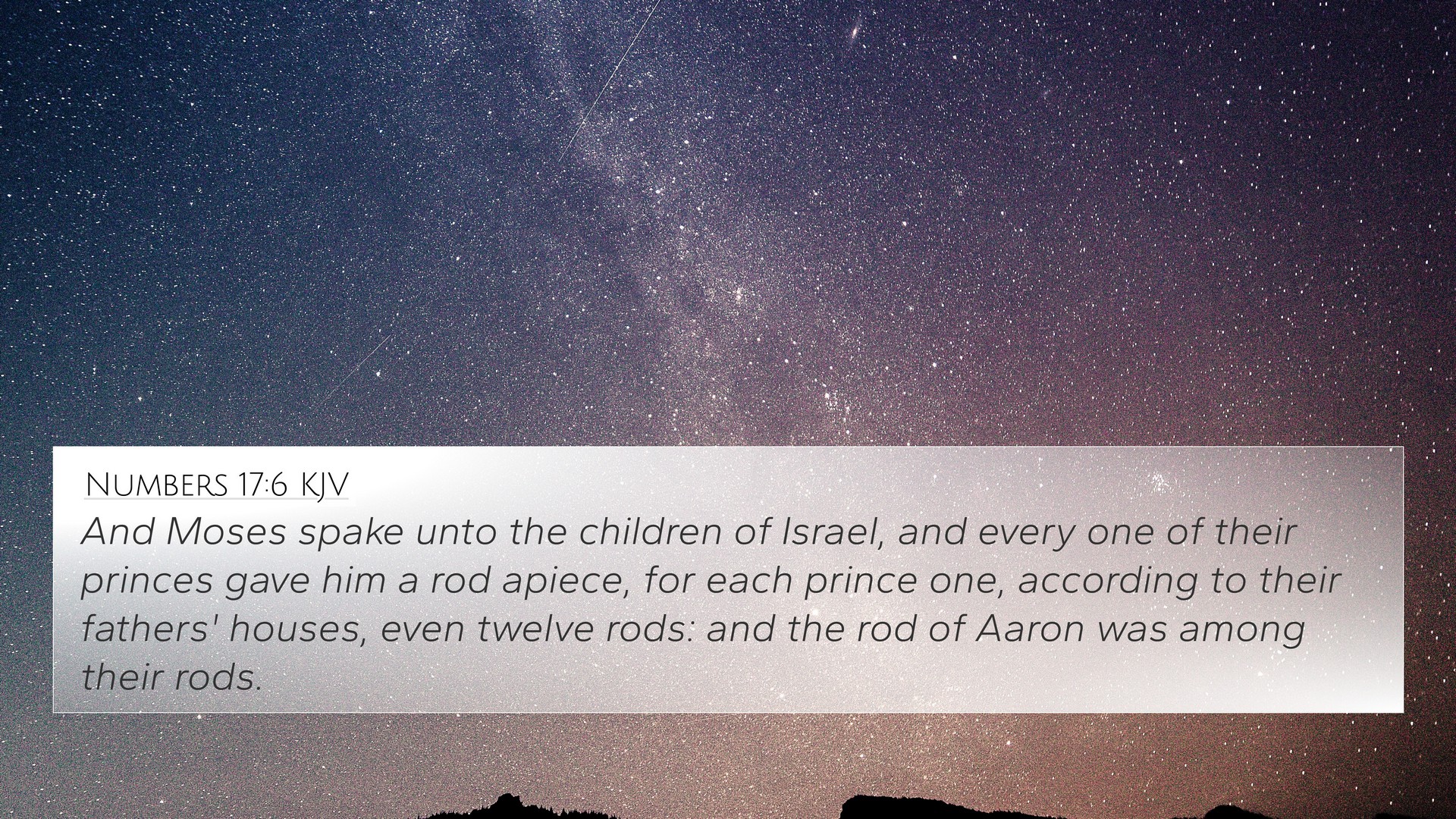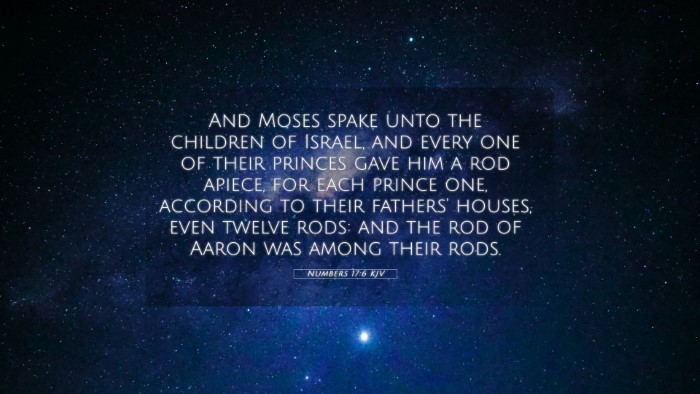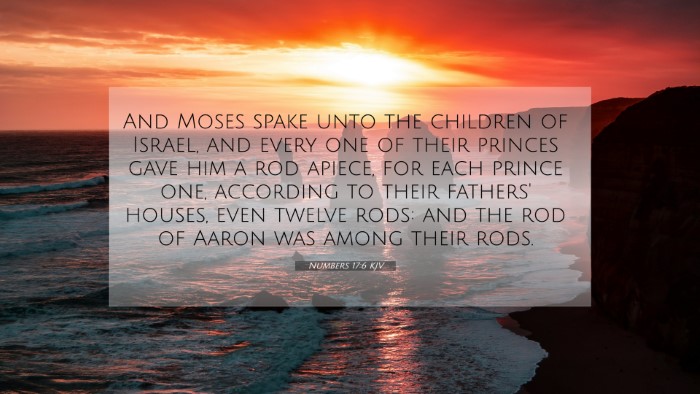Understanding Numbers 17:6
Numbers 17:6 states: “So Moses spoke to the children of Israel, and each of their leaders gave him a rod apiece, for each leader according to their fathers’ houses - twelve rods; and the rod of Aaron was among their rods.” This verse marks a significant moment in Israel’s history where the leaders of the tribes presented their rods to Moses, representing their authority. Below, we delve into the meaning and implications of this verse through insights gathered from various public domain commentaries.
Verse Context
This verse occurs in a broader narrative where God intended to confirm Aaron's priestly role amidst the complaints and doubts of the people. The presentation of rods serves as God’s miraculous confirmation of Aaron’s divinely appointed position.
Commentary Insights
-
Matthew Henry:
Henry emphasizes that the rods symbolize the leaders’ distinct tribal identities and the authority they wield. God's choice of Aaron’s rod to bud signifies the divine endorsement and establishes the Levitical priesthood's legitimacy. Through this act, the Lord counters the rebellion against Aaron’s leadership, reassuring His people of the rightful priestly line.
-
Albert Barnes:
Barnes elaborates on the significance of Aaron’s rod miraculously budding. It symbolizes life, renewal, and divine selection. The budding rod not only identifies Aaron as God’s chosen but also illustrates God's power to bring forth life from something dead, which can also be understood as foreshadowing later teachings of resurrection and new life in Christ.
-
Adam Clarke:
Clarke provides additional context by noting the historical background of the situation, highlighting the necessity of confirming Aaron’s authority amidst contention. He sees the gathering of rods as critical for the people’s faith and unity, reinforcing that God will clarify who is truly appointed for sacred duties.
Thematic Connections
The themes within Numbers 17:6 resonate through various parts of Scripture. It connects to concepts of divine authority, priesthood legitimacy, and the tangible evidence of God's power. Not just within this narrative but across biblical themes, we find:
-
Priesthood:
The legitimacy of priesthood and leadership is echoed throughout the Bible, particularly in the New Testament through Christ’s eternal priesthood (Hebrews 7:17).
-
Authority:
The acknowledgment of leadership God appoints reflects the theme found in Romans 13:1, where all authority is established by God.
-
Fruits of the Spirit:
The budding of Aaron's rod symbolizes the fruitful life that the Holy Spirit produces in believers (Galatians 5:22-23).
-
Miracles:
This event paves the way for understanding God's miraculous work in confirmation of His chosen leaders (Acts 5:12).
Cross-References for Further Study
Exploring inter-Biblical dialogue regarding Numbers 17:6, the following related verses provide deeper insight:
- Exodus 28:1 - The establishment of Aaron and his sons as priests.
- Hebrews 5:4-6 - The declaration of a high priest from among the people.
- Numbers 16:1-3 - The rebellion against Aaron and Moses.
- Leviticus 10:1-3 - The judgment upon Aaron’s sons for improper worship.
- 1 Peter 2:9 - The concept of a royal priesthood in Christ.
- Romans 5:1-2 - The access believers have to God through Christ’s priesthood.
- Revelation 1:6 - The call for believers to be a kingdom and priests.
Conclusion
Numbers 17:6 serves as a vital touchpoint for understanding divine authority, the validation of leadership, and God’s miraculous capacity to affirm His chosen ones. By examining cross-references, we glean a broader perspective on the continuity and fulfillment of themes throughout Scripture. This engagement enriches our study tools for Bible cross-referencing, providing a comprehensive guide for those seeking deeper understanding within biblical texts.


